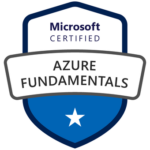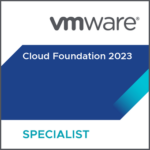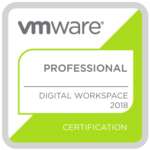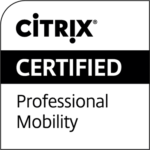
VMware Tanzu Licensing – What’s New?
Last year, VMware gave the Tanzu portfolio a fairly good facelift with all the announcements from VMware Explore 2022. It is clear to me that VMware focuses on multi-cluster and multi-cloud Kubernetes management capabilities (Tanzu for Kubernetes Operations) and a superior developer experience with any Kubernetes on any cloud (Tanzu Application Platform). VMware embraces native public clouds and so it was very exciting for many customers when they announced the lifecycle management of Amazon Elastic Kubernetes Service (EKS) clusters – the direct provisioning and management of EKS clusters with Tanzu Mission Control. But what happened in the last 6 to 9 months since VMware Explore US and Europe? And how do I get parts of the VMware Tanzu portfolio nowadays?
Tanzu Licensing
Let us start with licensing first. in October 2022, VMware made it clear that they do not want to move forward anymore with the Tanzu Basic and Advanced editions, only Tanzu Standard was left. VMware replaced Tanzu Basic with “Tanzu Kubernetes Grid” (TKG), which comes with the following components:
- vSphere capabilities / K8s Runtime
- K8s Cluster Lifecycle Management – Cluster API
- Image Registry – Harbor
- Container Networking – Antrea/Calico
- Load Balancing – NSX Advanced Load Balancer
- Ingress Controller – Contour
- Observability – Fluent Bit, Prometheus, Grafana
- Operating System – Photon OS, Ubuntu, bring-your-own node image
- Data Protection – Velero
Note: Nothing is official yet, but according to this article intended for partners, VMware is going to announce the Tanzu Standard EOA (End of Availability) soon:
…containing updated information on Tanzu Standard entering end of availability (EOA) and the new Tanzu Kubernetes Operations and Tanzu Application Platform partner resources.
Looking at the “Tanzu Explainer” and its changelog from the 5th of May, one can find the following: “Updated to reflect new Tanzu for Kubernetes Operations SKUs“.
Tanzu for Kubernetes Operations Bundles
The Tanzu Explainer on Tech Zone lists the following new bundles/packages for Tanzu for Kubernetes Operations (TKO):
- Tanzu for Kubernetes Operations Foundation includes Tanzu Mission Control Advanced and Tanzu Service Mesh Advanced. Two add-on SKUs are available—one adds Antrea Advanced and Aria Operations for Applications, the other adds these plus NSX Advanced Load Balancer Enterprise. Tanzu Kubernetes Grid is not included in this bundle.
- Tanzu for Kubernetes Operations includes Tanzu Kubernetes Grid, Tanzu Mission Control Advanced, Tanzu Service Mesh Advanced, Antrea Advanced, and Aria Operations for Applications.
- Tanzu for Kubernetes Operations with NSX Advanced Load Balancer includes Tanzu Kubernetes Grid, Tanzu Mission Control Advanced, Tanzu Service Mesh Advanced, Antrea Advanced, Aria Operations for Applications, and NSX Advanced Load Balancer Enterprise.
Note: Since Tanzu Mission Control Standard (TMC) was only sold as part of the Tanzu Standard Edition, we see VMware moving forward with TMC Advanced only. Which is good! But TMC Essentials still comes with vSphere+ and VMC on AWS.
Tanzu Entitlements with vSphere and VMware Cloud Foundation Editions
What about vSphere and VMware Cloud Foundation (VCF)? Let me give you an overview here as well:
- vSphere+ Standard – No Tanzu entitlements included
- vSphere+ – Includes TKG and TMC Essentials
- vSphere Enterprise+ with TKG – Includes TKG
- VMware Cloud Foundation – All VCF editions have Tanzu Standard included
Note: We do not know yet what the Tanzu Standard EOA means for the Tanzu entitlements with VCF. Need to wait for guidance.
VMware Cloud Packs
In April 2023, VMware introduced new bundles called VMware Cloud Packs and they come in four different flavours:
- Compute with Advanced Automation. vSphere+ and Aria Universal Suite Advanced
- HCI. vSphere+, vSAN+ Advanced and Aria Universal Suite Standard
- HCI with Advanced Automation. vSphere+, vSAN+ Advanced and Aria Universal Suite Advanced
- VMware Cloud Foundation. vSphere+, vSAN+ Enterprise, NSX Enterprise Plus, SDDC Manager, Aria Universal Suite Enterprise, Aria Operations for Networks Enterprise add-on
In addition to these four Cloud Packs offerings, customers can get the following add-ons:
- Data Protection & Disaster Recovery
- Network Detection and Response
- Tanzu Mission Control
- Ransomware Recovery
- Advanced Load Balancer
- Workload and Endpoint Security
- Intrusion Detection and Prevention
- VDI/Desktops
Note: As you can see, all new cloud packs have TKG included and TMC is an add-on. vCenter Standard is with connected and disconnected subscriptions.
Important: Please note as well that the individual components of the bundles cannot be upgraded independently. Example – Aria Universal Suite Standard as part of the HCI Cloud Pack cannot be upgraded to Aria Universal Suite Enterprise.
Conclusion
VMware is clearly moving in the right direction: They want to simplify their portfolio and improve how customers can consume/subscribe services. As always, it is going to take a while until they have figured out which bundles and product versions make sense for most of the customers. Be patient. 🙂






























